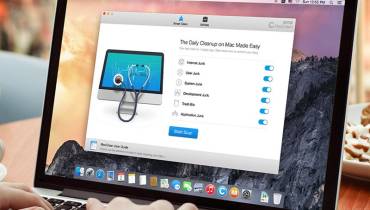How to Leverage Gifographics to Grab Attention and Make a Bigger Impact Online

Technology continues to change rapidly and everyone working in the digital space needs to adapt accordingly to remain relevant. A new term, gifographic, picking up steam fast in the online marketing and content creation world is the new frontier to conquer.
A gifographic refers to a play on two long-standing internet content forms: the .gif (an animated image) and infographic. It is a fusion of the two visual content forms to create an new visual form that’s increasingly starting to influence online marketing and sales for internet businesses.
Gifographics, a Smart Move for Content Marketing
Compared to infographics and written content, gifographics are much more appealing to people because they’re more dynamic. They don’t simply incorporate words to explain or describe things; rather they augment the information provided by a traditional infographic to tell a more visually interesting story. The animated pictures and texts or audio found in gifographics delight readers and make messages and explanations fun and instantly understandable. Hence people are more inclined to view and engage with your digital content and that helps boost your bottom line.
Readers also share animated picture messages more than plain blocks of text. In fact, they will skim over large blocks of text. Thus, the gifographic is a smart move for content commercialization. It captures readers’ attention immediately and makes a powerful impact on social media. Many people won’t just watch and read the gifographic and stop there, but also share the content with their friends and relatives, increasing your website traffic and brand reach.
Information that is often considered bland or boring and that doesn’t appeal to as many readers, such as topics with heavy statistics can be livened up through gifographics. The gifographic presents information in a way that catches the eye and hooks the viewer, engaging the targeted audience more effectively and conveying the intended message more powerfully. Oftentimes readers won’t even realize they are consuming the kind of statistic-loaded piece of content, for example, that they would ordinarily avoid.
The gifographic is also much more memorable, making it a better tool for informing, educating and or entertaining people on a vast range of topics. Many internet users are actually visual people who tend to remember content that is demonstrated in visual forms than that which is in plain text only.
Additionally, gifographics are mobile friendly. That means you can reach a much bigger audience since people don’t need to have a laptop or desktop near them to view gifographics. They can simply access your gifographics through their mobile phones or Tablets.
How to Produce Your Own Gifographic
Tools like Photoshop and other programs like Animaker can help you easily create beautiful animated infographics, but:
- Before writing any piece of content, one ought to have the topic to write about and a specific audience in mind. This applies to gifographics as well; you ought to convey the right message to the right people. Therefore, know the topics your audience likes, then focus on giving them exactly that. Knowing their likes will contribute significantly to how your gifographic is received, the number of views you will get and people's positive reviews may help to pull others to your content.
- Make your gifographic interesting. In as much as your aim is to market or educate your clients on your products, your content ought to be interesting too. When your visual content is interesting, you'll grab people's attention, get your message across and attract more viewers.
- Incorporate daily life experiences to generate and appeal to your audience's interest. By incorporating what people experience daily or in their daily routines, you appeal to their sensibilities and they are more likely to stop to view your content. When they like it, they will share it with others, and this helps grow your audience. One might also incorporate what is trending at any given time. For example, football, athletics, politics, celebrities and other aspects of daily life that people can relate with. This can help your gifographic spread rapidly.
- Know your audience. Different audiences have different preferences. Hence the approach you apply to each should be different to appeal to them effectively. Therefore, research your audience so that you use the best technique that will capture their attention.
- Use online ads where applicable to bring more people to your site. Search engine optimization is also a great way to increase views to your content. The higher your website ranks in search engines like Google, the greater the chances of increasing views to your gifographic.
Check out the gifographic below that explains a step-by-step how to create one created by graphic design artist Eleanor Lutz who designs animated infographics with her company Tabletop Whale (click graphic to enlarge):
See Also: 22 Ways to Create Compelling Content When You Don’t Have a Clue (Infographic)

![How to Make an Animated Infographic [GIFOGRAPHIC]](/sites/default/files/u134/How%20to%20Make%20an%20Animated%20Infographic.gif)




































